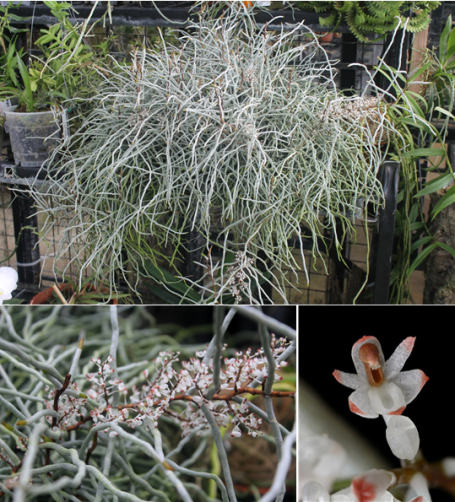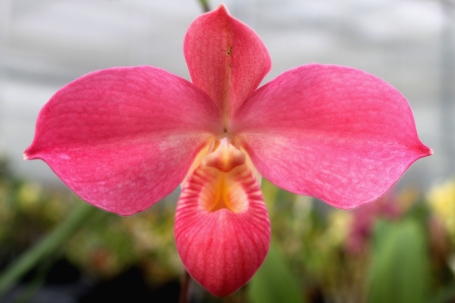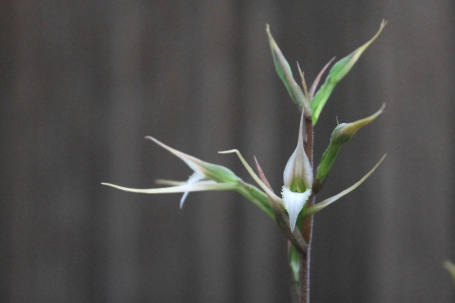Come See for Yourself!: What’s Blooming in the Smithsonian Gardens Orchid Collection
January 22, 2015 at 10:25 am smithsoniangardens Leave a comment
“Orchids: Interlocking Science and Beauty,” the joint orchid exhibit between Smithsonian Gardens and the United States Botanic Garden opens this coming Saturday at the National Museum of Natural History. The exhibit explores the connections between botany, horticulture, and technology through time and the myriad influences they had on the orchid world of today.
We are always thrilled to be able to show off in person many of the beautiful plants that are hidden away in the greenhouses for the remainder of the year. You can expect to see some of the usual showstoppers adorning the exhibit hall; brightly colored cymbidium hybrids, cheerful epidendrums with their spherical flower clusters and the ever-stately phalaenopsis hybrids in their robes of pink, white and purple.
Another orchid you can expect to see this coming weekend is Phragmipedium Fritz Schomburg, a primary hybrid of (the infamous) Phragmipedium kovachii and Phragmipedium besseae. The more rounded petals and pink coloration come from Phrag. kovachii, while the elongated lip and red tint hail from Phrag. besseae. This past year Smithsonian Gardens has made a conscious effort to add more Phragmipediums to the orchid collection, and this hybrid is one of the first of these new additions to grace the greenhouses with its lovely flowers.
With over 8,000 plants in the collection, it’s obvious that we can’t display every orchid during the exhibit, even though it runs for three months (from January 24th– April 26th). This next species, Eltroplectris calcarata is a south Florida native, with its range extending throughout the Caribbean and into northern South America. Last February, a flask of Etp. calcarata seedlings was donated to Smithsonian Gardens by the Atlanta Botanical Garden and in less than a year they grew from tiny seedlings into blooming size specimens. We were thrilled to find spikes on a third of these plants and watch them come into bloom over the last few weeks. This species doesn’t immediately catch the eye like a bright pink phrag, but there is a captivating elegance in the sharp lines of the stark white flowers with their vivid green cores.
Another species that recently bloomed is Solenangis aphylla. Like its name suggests, this African orchid is devoid of leaves and relies solely on its roots to carry out photosynthetic processes. The miniscule red and white flowers are ethereal and are sprinkled like fairy dust throughout the monstrous mass of plant roots that seem to be devouring our Angraecum bench!

Top- Solenangis aphylla; Bottom Left- flower cluster; Bottom Right- flower detail; photo courtesy of Bryan Ramsay
There is always something blooming in the Smithsonian Gardens Orchid Collection. Stay connected with us to see more dazzling plants from the collection, and visit our exhibit downtown through the end of April to experience them firsthand!
-Julie R., Living Collections Specialist
Entry filed under: Collections, Orchids. Tags: flowers, orchids.



Trackback this post | Subscribe to the comments via RSS Feed